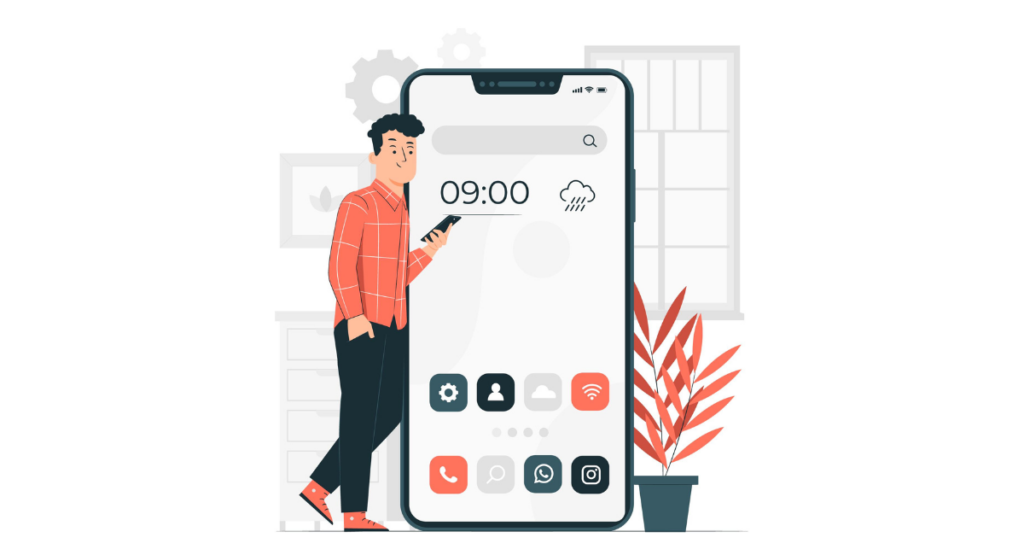In increasingly digital times, a mobile-first approach holds paramount significance. More and more users access websites from their mobiles, and developers like to develop for the Mobile format first.
There may be days when you want to access the mobile version of some website from your desktop browser. Here's how to easily do it using one of the most used web browsers out there Google Chrome.
This feature is an absolutely essential tool for web developers who test mobile responsive designs or even just for a user looking to access mobile-specific content.
Knowing how to change to the mobile view of a website in Chrome will optimize your surfing experience by letting you view websites as they appear on a smartphone or tablet.
Why View Mobile Version on Chrome

The mobile version, when viewed in a desktop browser like Chrome, gives a smoothened experience for viewing and a unique view of how content is laid out on smaller screens.
Benefits of Mobile Version
In most instances, the mobile version of a website is very simple, with a quick loading time than the desktop version. This is attributed to the fewer graphics and a cleaner layout to enhance speed and usability on mobile devices.
It will also outline, when the mobile version is viewed on Chrome, whether all elements are truly optimized for mobile usability and accessibility of website viewing to make it easy for a mobile user to access content.
Importance of Compatibility
Making the website compatible across devices such as mobile phones and tablets is needed quite extensively in the digital scenario.
It is necessary for the developers and designers to check the cross-device device compatibility since a lot of internet traffic takes place through mobile devices, hence providing all users with the same and consistent experience.
Developers and site owners use Chrome to preview the mobile view of a website for it to work and look good on different screen dimensions and resolutions.
How to Access Mobile Version on Chrome
Accessing the mobile version of a website in Chrome can be accomplished by using built-in developer tools specifically designed for this purpose.
Step 1: Open Chrome Browser
Open the chrome browser on your desktop/laptop. The version of chrome installed should be the latest one for better performance and availability of all its features.
Step 2: Navigate to the Desired Website
Enter the URL of the website for which you want to view its mobile version in Chrome's address bar and press Enter to load it.
Step 3: Access Developer Tools
Once the webpage has loaded, click anywhere on the page and right-click - there, select "Inspect". Alternatively, you can simply open the dev tools by pressing Ctrl+Shift+I, or on a Mac, Cmd+Option+I.
Step 4: Toggle Device Toolbar
In the Developer Tools interface, click the device toolbar icon a small tablet and phone. This will switch to a mobile rendering of the page.
Step 5: View the Mobile Version
Now you can see the mobile view of the site. In the Developer Tools panel, at the top, is a dropdown that changes between the variety of mobile devices, which in turn change the screen resolution.
This will allow you to assess how a website will look on different mobile devices, hence ensuring its compatibility and user-friendly features.
Tools for Mobile Testing

Testing of the mobile version of the website is an indispensable part of the process for ensuring that the user is having a smooth and functional browsing experience from the use of the mobile device's viewpoint.
Many tools have been provided to do this work, ranging from very simplistic built-in browser features to more advanced third-party platforms.
Chrome DevTools
One of the easiest tools you have available to start testing on mobile devices is Chrome DevTools. Built directly into the Google Chrome browser.
This technology allows both developers and designers to natively simulate a wide number of different mobile devices from the comfort of their own desktop browsers.
This gives preview of how a site will look on varied screens apart from helping test events for touching and other mobile-specific interactions.
Mobile-Friendly Test
Another critical tool that Google offers is the Mobile-Friendly Test. After all, this online tool needs only a URL to check whether a website diverts from their recommended mobile design criteria.
It provides feedback on readability of text, size of content, and touch accessibility quite useful in a quick check.
BrowserStack
For a more comprehensive testing environment, BrowserStack offers real-time testing on actual mobile and web browsers on different operating systems.
This is particularly useful for cross-browser testing to ensure consistent behavior across multiple devices and platforms.
Testing Mobile Version Responsiveness
Ensuring that a website reacts appropriately to various screen sizes and orientations is fundamental in mobile web development. This process includes understanding the principles of responsive design and testing various elements of the site.
Understanding Responsive Design
Responsive design is a web development approach that creates dynamic changes to the appearance of a website, depending on the screen size and orientation of the device being used to view it.
This method provides optimal usability across devices, enhancing the user's experience.
Testing Elements
Testing involves checking different components of your website including images, text, and other media files to ensure they adjust correctly for mobile screens.
Developers typically use media queries to handle these variations, and testing those queries is crucial for maintaining an effective presentation on mobile devices.
Adjusting Screen Size
Manually resize the browser window to see how your website looks on different devices. Besides, there are a lot of inbuilt features regarding Chrome DevTools for simulating many kinds of devices from desktops to smartphones.
All these various environments can be tested during development to quickly resolve responsive issues.
This will greatly enhance the mobile user experience, ensuring that the site works fine and looks nice on any device by making use of the many tools and techniques available to web developers in carry this out.
Troubleshooting Mobile View Errors
When accessing the mobile version of a website on Chrome, users might occasionally encounter several common errors. Resolving these effectively enhances your browsing experience.
Common Issues
Some typical issues include improperly loading pages, unresponsive site elements, or content that doesn't fit the mobile screen properly.
These problems can stem from outdated browser versions, cached data overload, or faulty website responsiveness settings.
Debugging Tips
To effectively troubleshoot these errors, start by refreshing the website or clearing your browser’s cache and cookies. Ensure you are using the latest version of Chrome for optimal compatibility.
Additionally, disabling Chrome extensions temporarily can help determine if any add-ons are causing conflicts.
Testing on Multiple Devices
Replicating the issue on different mobile devices or using the Chrome developer tools to simulate other mobile environments is crucial.
This approach helps identify whether the problem is isolated to a specific device or a broader issue with the site’s mobile responsiveness.
Benefits of Viewing Mobile Version
Opting to view the mobile version of websites on Chrome not only resolves specific functionality and compatibility issues but also enhances the overall browsing experience.
Speed Improvement
Mobile-optimized websites are specifically designed to load faster by using fewer data, smaller images, and streamlined content.
This results in quicker loading times and less data consumed, which is especially beneficial for users on limited data plans.
H5: User Experience Enhancement
Mobile websites are typically easier to navigate, with touch-friendly interfaces and simplified menus. This adaptation significantly improves usabilityand accessibility, making browsing smoother and more intuitive.
Optimized View
Viewing the mobile version in Chrome ensures that all visual and text elements are scaled appropriately, providing optimal readability and interface interaction.
This tailored approach avoids the need for zooming and excessive scrolling, offering a cleaner and more focused user experience.
Book a Demo and experience ContextQA testing platform in action with a complimentary, no-obligation session tailored to your business needs.
Conclusion
In today’s mobile-centric world, viewing the mobile version of websites on desktop browsers like Chrome can significantly enhance usability and accessibility.
By leveraging Chrome’s Developer Tools, even casual users can simulate a mobile browsing environment effortlessly. This feature not only aids in efficient website navigation but also offers a clearer insight into mobile-specific functionalities and layout.
Hence, mastering this simple technique can greatly improve your web browsing experience, making it more adaptable to various screen sizes and device types.
Remember, keeping track of the latest updates in Chrome can also ensure an even smoother user experience as browser capabilities continue to evolve.
Also Read - Find Proxy Settings on Your Computer (for Local Testing Parameters)
